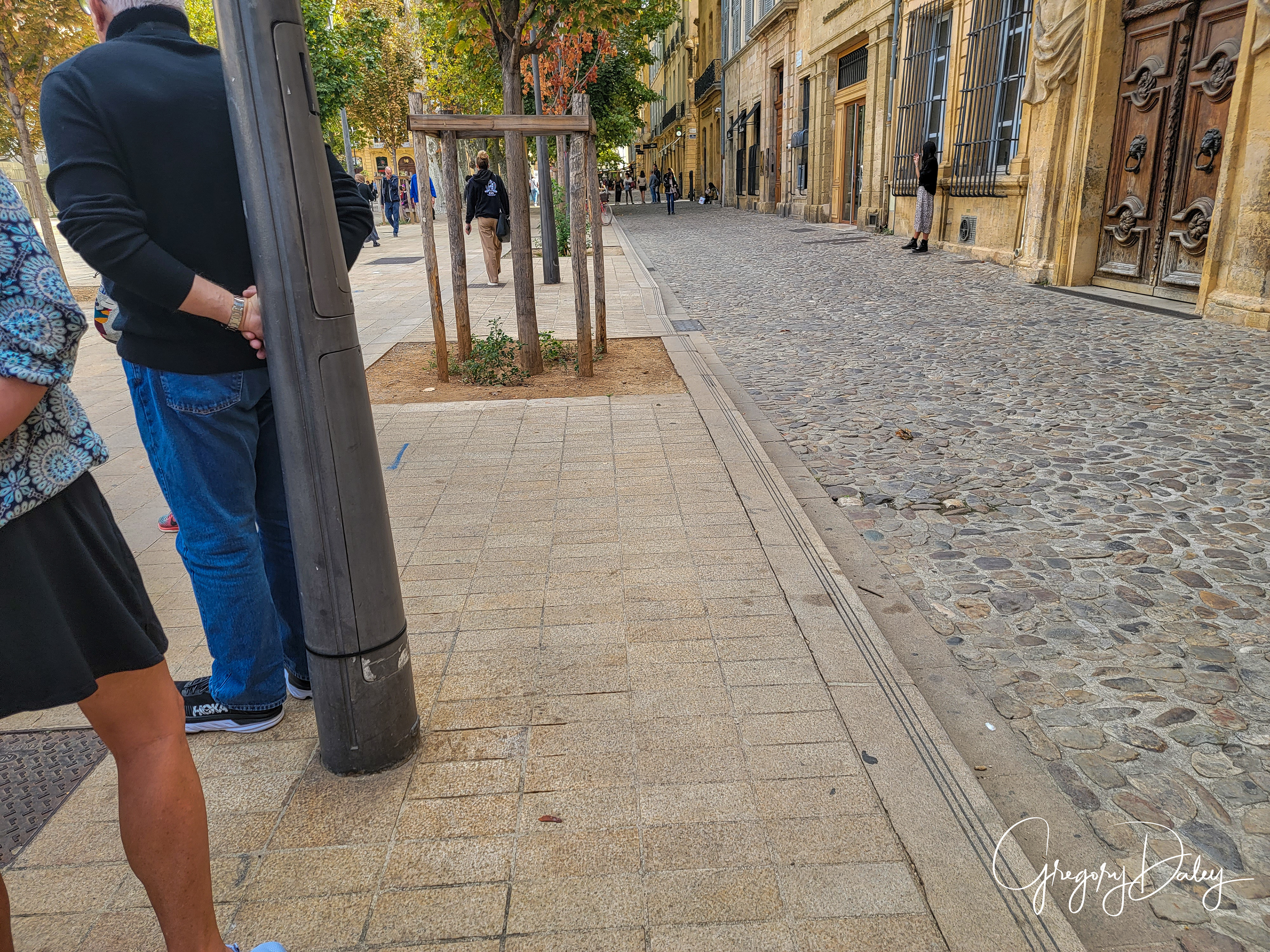

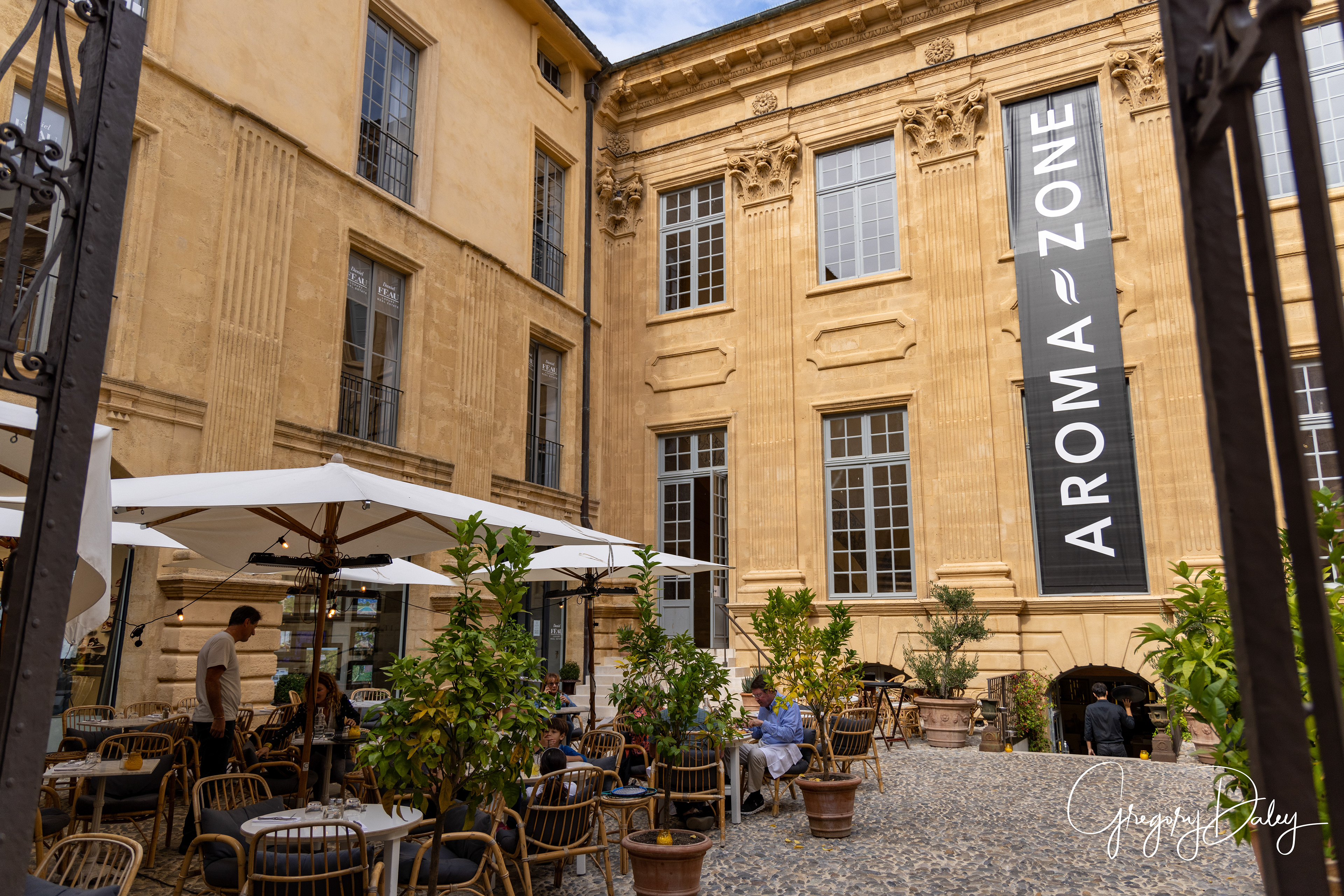
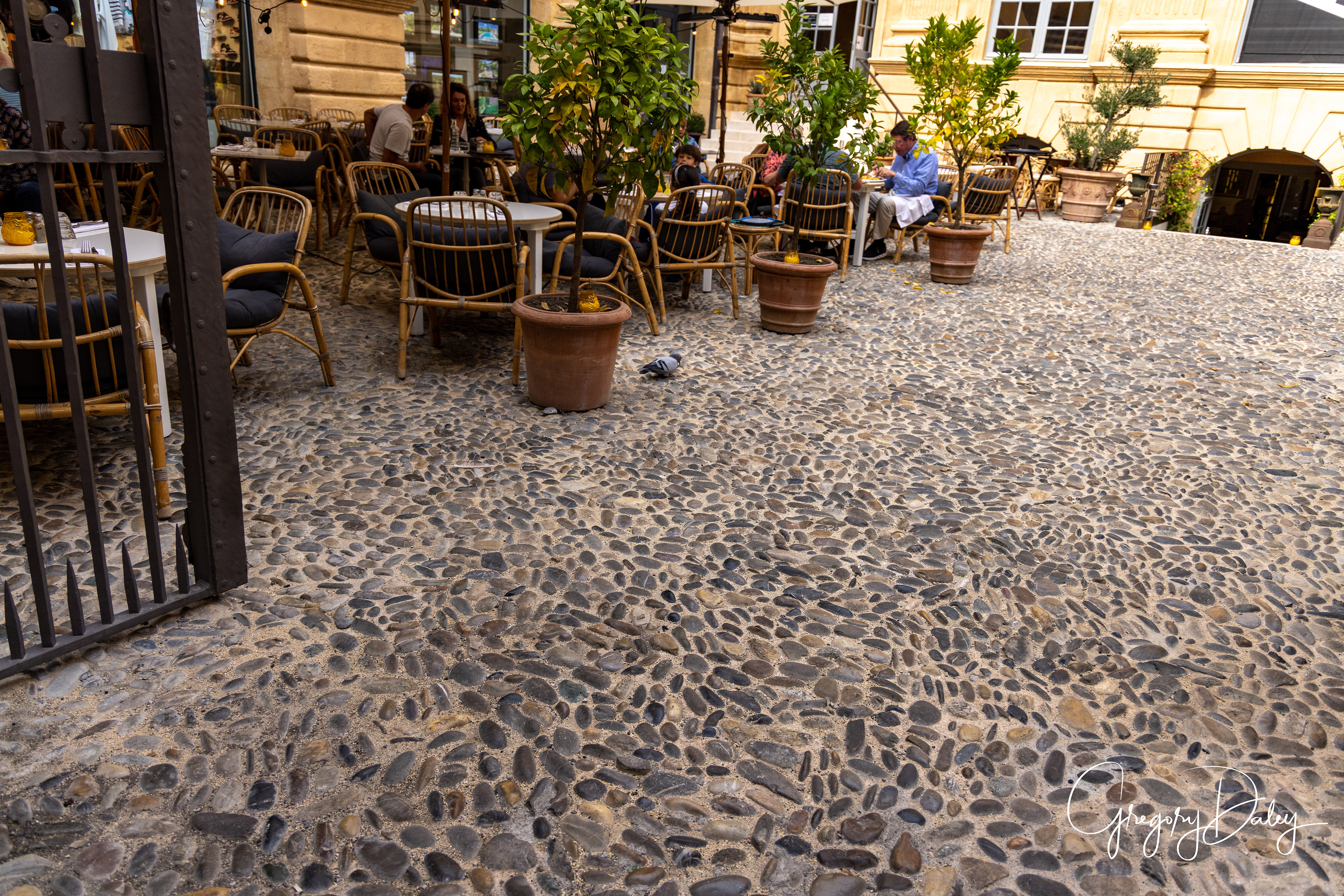
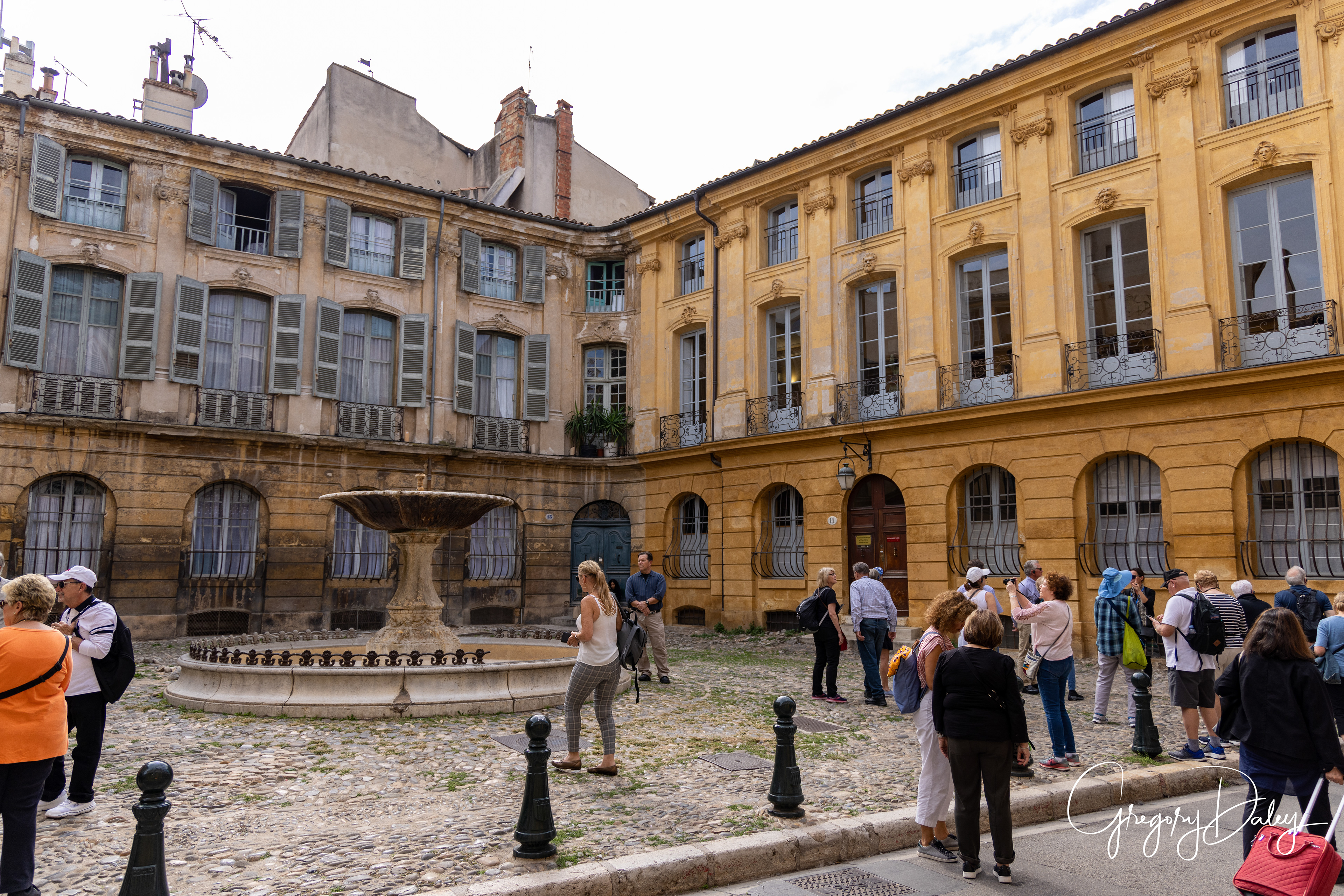


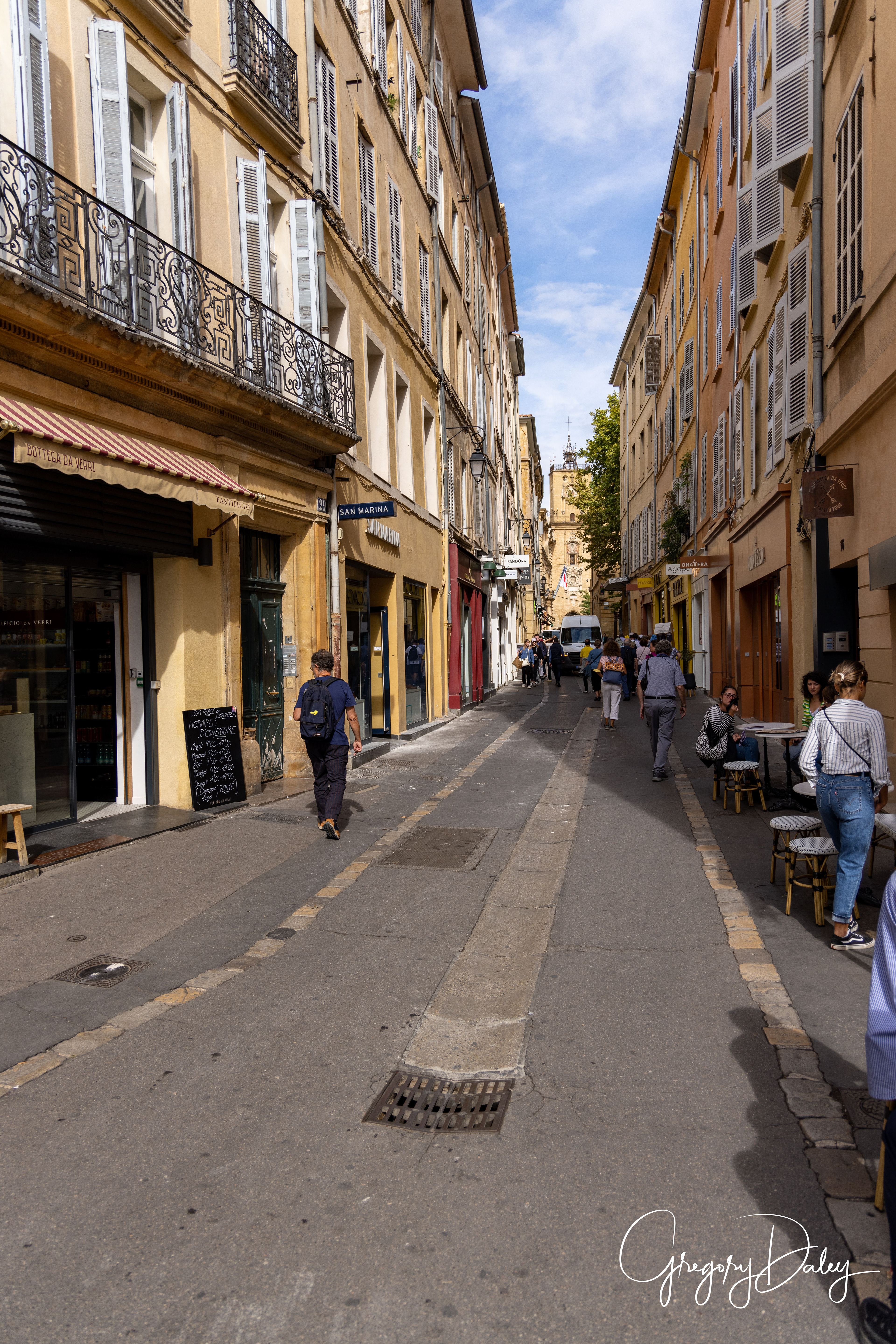


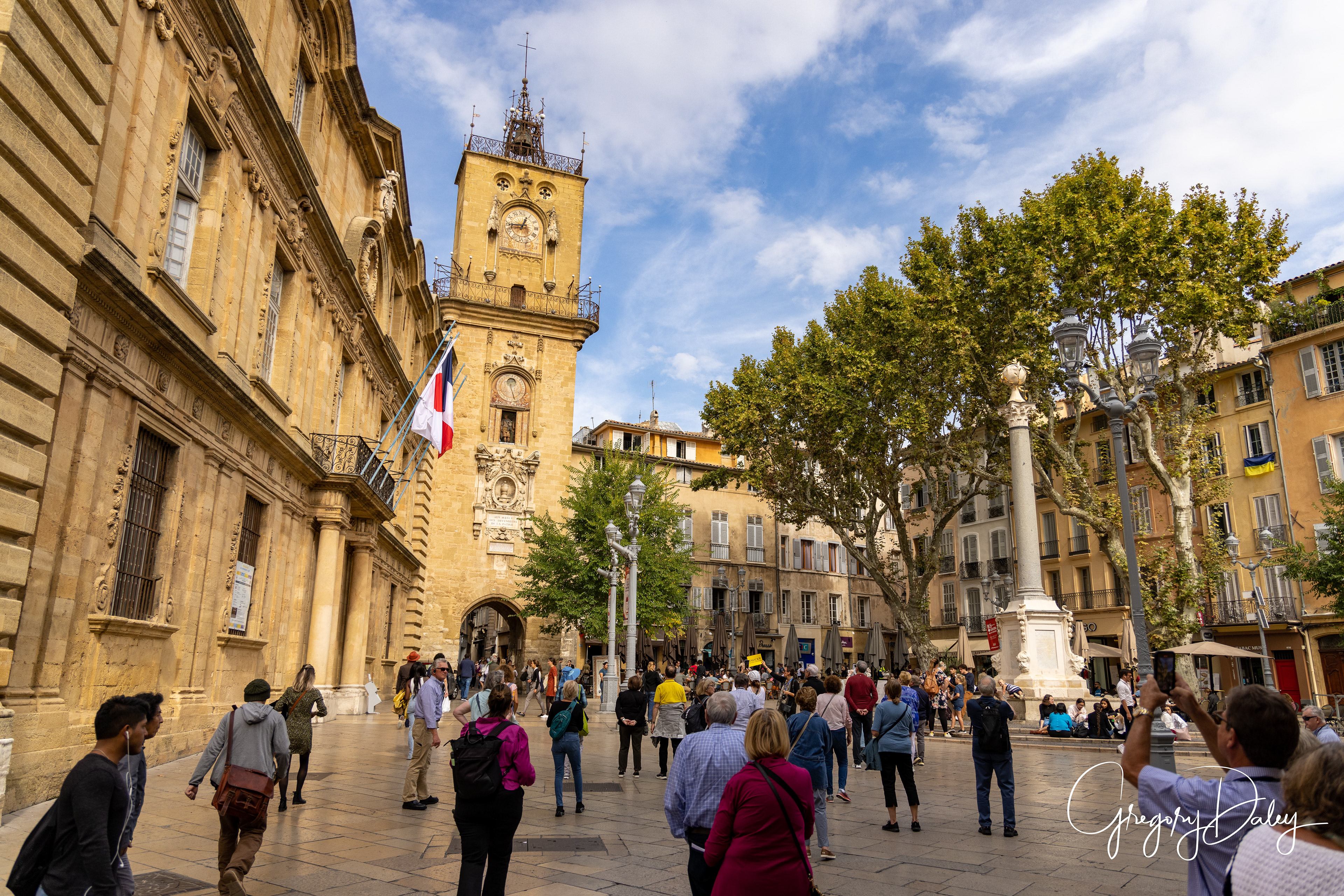


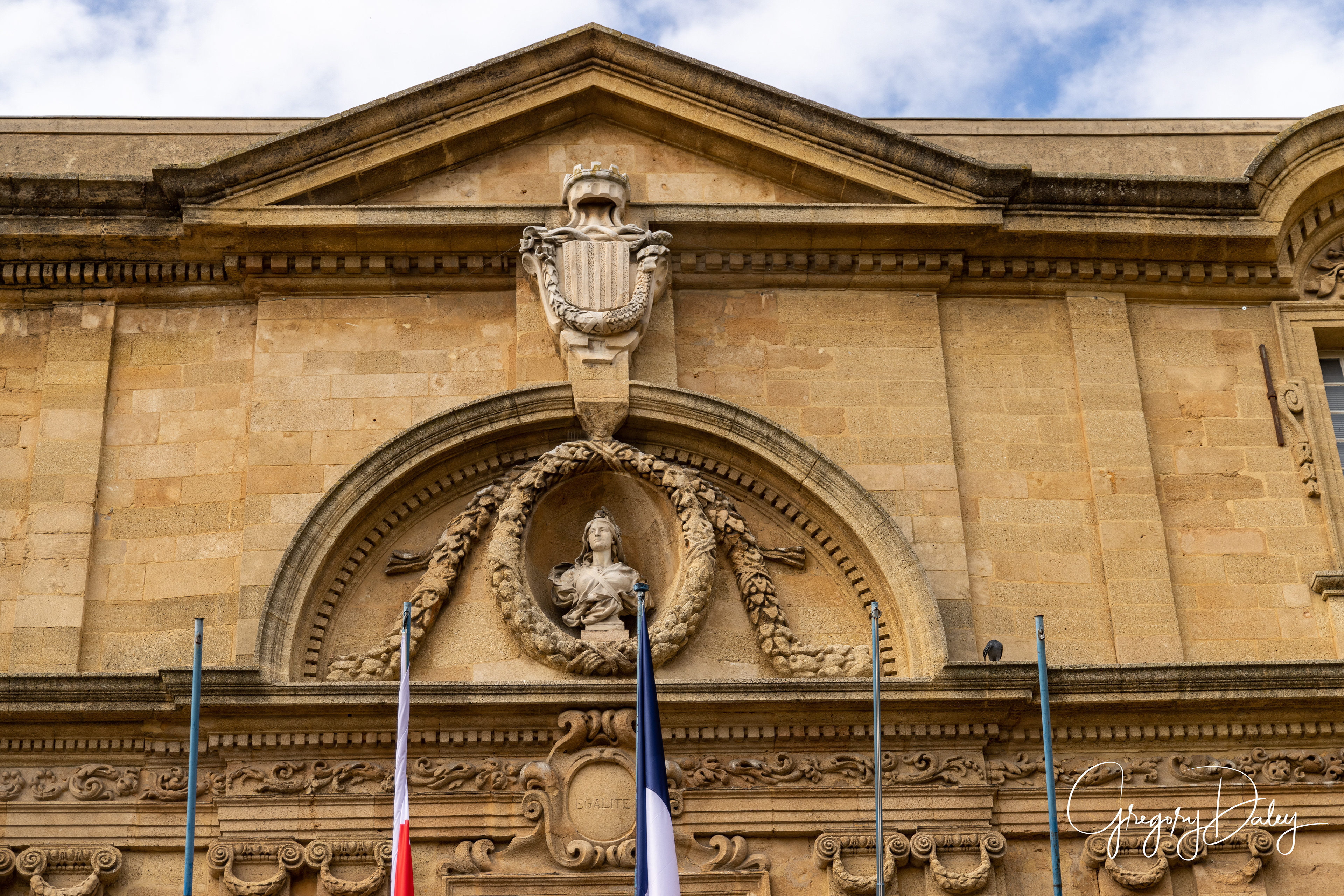
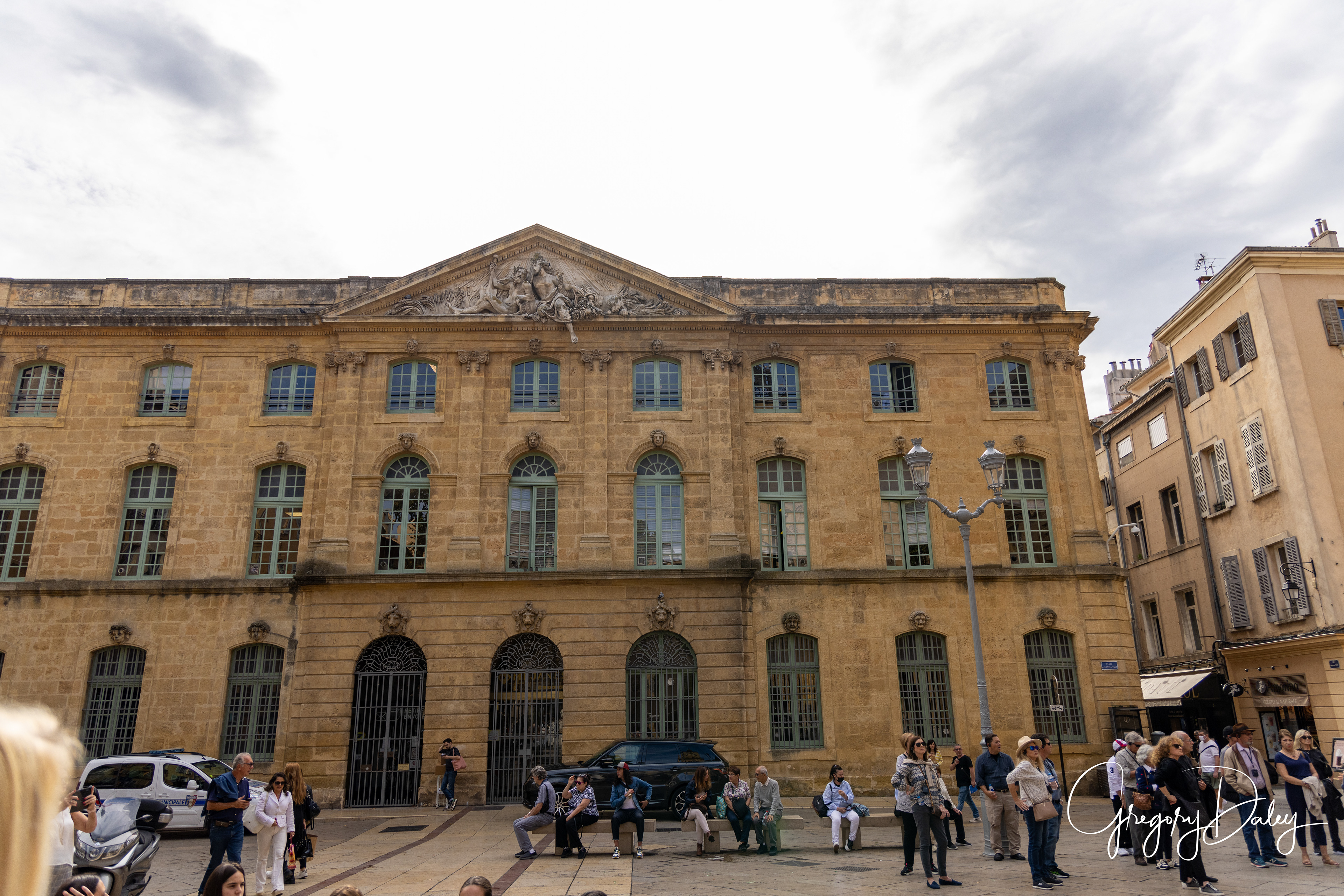
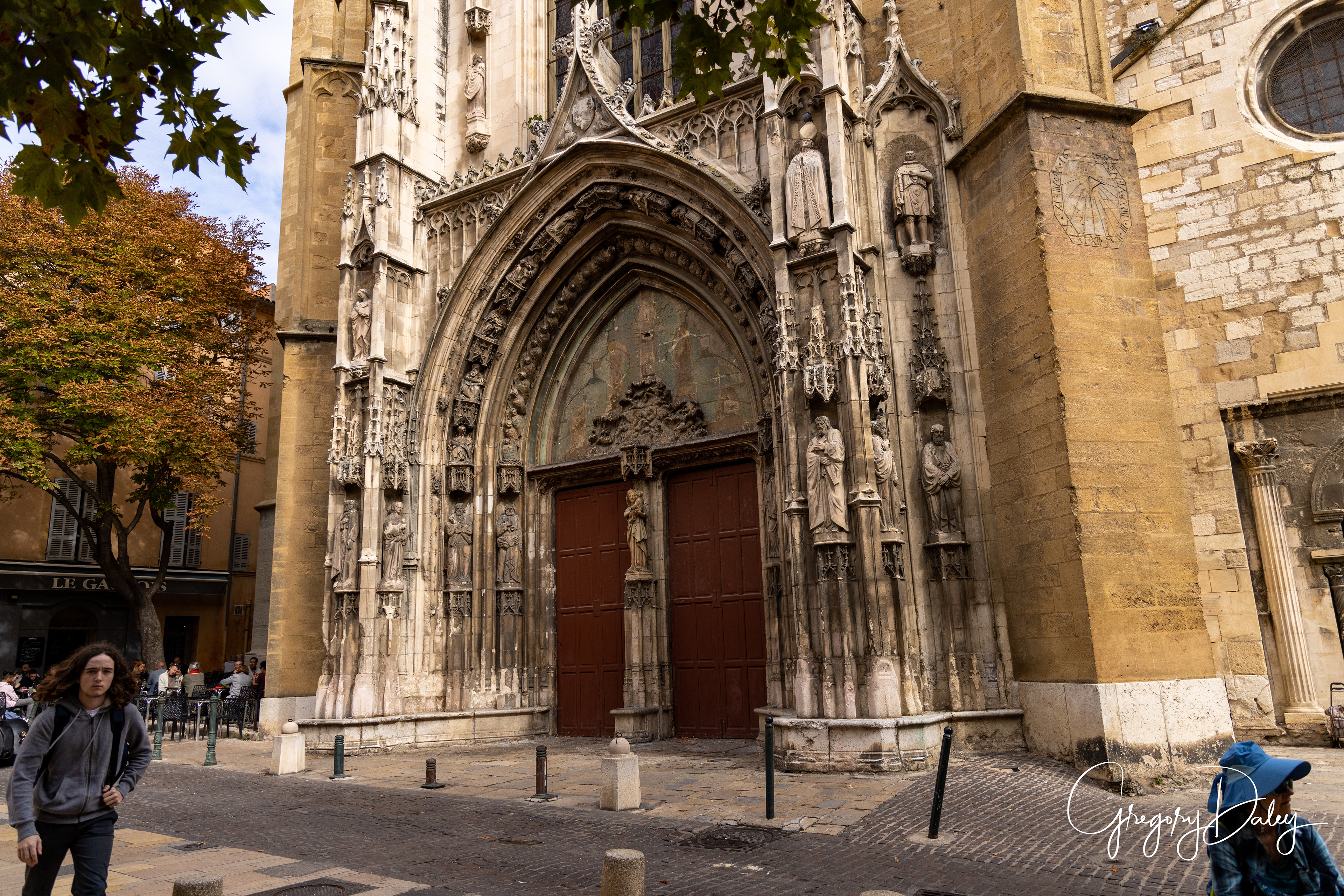
10/12, Day 3 of the tour Bus and tour guide did not meet properly, so we did three times the walking we were scheduled to do. One leg downhill, one leg (the tour) uphill and the third leg downhill. We were supposed to do only one leg downhill. Everyone was exhausted. Had a nice lunch in an outdoor sidewalk cafe with Harry and Andrea. Huge piece of pork with all the trimmings. Aix-en-Provence is a city and commune in southern France, about 20 mi north of Marseille. A former capital of Provence, it is the subprefecture of the arrondissement of Aix-en-Provence, in the department of Bouches-du-Rhône, in the region of Provence-Alpes-Côte d'Azur. The population of Aix-en-Provence is approximately 145,000. Its inhabitants are called Aixois or, less commonly, Aquisextains. Aix was founded in 123 BC by the Roman consul Sextius Calvinus, who gave his name to its springs, following the destruction of the nearby Gallic oppidum at Entremont. In 102 BC its vicinity was the scene of the Battle of Aquae Sextiae, where the Romans under Gaius Marius defeated the Ambrones and Teutones, with mass suicides among the captured women, which passed into Roman legends of Germanic heroism. In the 4th century AD it became the metropolis of Narbonensis Secunda. It was occupied by the Visigoths in 477. In the succeeding century, the town was repeatedly plundered by the Franks and Lombards, and was occupied by the Saracens in 731 and by Charles Martel in 737. Aix, which during the Middle Ages was the capital of Provence, did not reach its zenith until after the 12th century, when, under the houses of Barcelona/Aragon and Anjou, it became an artistic centre and seat of learning. Aix passed to the crown of France with the rest of Provence in 1487, and in 1501 Louis XII established there the parliament of Provence, which existed until 1789. In the 17th and 18th centuries, the town was the seat of the Intendance of Provence. Current archeological excavations in the Ville des Tours, a medieval suburb of Aix, have unearthed the remains of a Roman amphitheatre. A deposit of fossil bones from the Upper Continental Miocene gave rise to a Christian dragon legend.















